Siphon for sink above washing machine with outlet
 If you decide to install an automatic washing machine in the bathroom, while hiding it under a special sink, you will definitely need a sink siphon with an outlet for the washing machine. Without a siphon, you will not be able to make a drain for the washbasin, not to mention connecting the washing machine to the sewer, so we decided to devote this publication specifically to siphons. We hope we will help you choose and install the right plumbing fixture, organizing the normal discharge of waste water into the sewer.
If you decide to install an automatic washing machine in the bathroom, while hiding it under a special sink, you will definitely need a sink siphon with an outlet for the washing machine. Without a siphon, you will not be able to make a drain for the washbasin, not to mention connecting the washing machine to the sewer, so we decided to devote this publication specifically to siphons. We hope we will help you choose and install the right plumbing fixture, organizing the normal discharge of waste water into the sewer.
Varieties
On the modern market you can find a very large number of different siphons, which differ from each other: in size, number of outlets, shape, installation, and so on. If you are faced with the need to install a washing machine under the sink in the bathroom for the first time, then it is very important to choose a suitable siphon, which will not only allow you to connect both the sink and the machine to the sewer system, but will also not interfere with the correct placement of the washing machine body.
Sometimes siphons have such a strange appearance that it is even impossible to understand what kind of plumbing fixture it is and how it can be used.
The fact is that a regular siphon is located strictly under the sink and takes up quite a lot of space. And if we decide to place the washing machine neither to the left nor to the right of the sink, but directly under it, difficulties may arise. But let’s not get ahead of ourselves, but first we’ll deal with the question of what kind of siphons are there that could potentially be useful in our case?
Conventional siphon with outlet. You can see it in the picture below.It is no different from the sink siphon we are used to, with the exception of a special side outlet to which the washing machine drain hose is connected. Such siphons are very common, but they are not suitable for our purpose. They can only be used when installing a washing machine under a sink with a countertop, and even then with a high degree of convention.

Siphon splitter. A very simple plumbing fixture that helps organize a double sewer connection. It consists of a plastic tee, one outlet of which is connected to the sewer, and corrugated hoses are inserted into the other two. One hose will come from the washing machine, and the other from the sink drain.
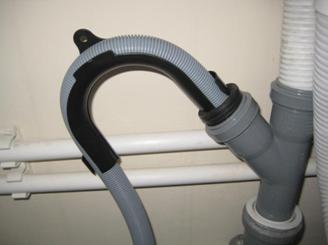
Siphon built into the wall. This is the most compact of all siphons, since its “body” is walled up in the wall along with the sewer pipe, and only a small part of the housing and outlets for connecting the drain hose of the washing machine and the hose installed on the sink drain come out. In the figure below you see a built-in siphon with one outlet, but there are exactly the same models with two and even three outlets.
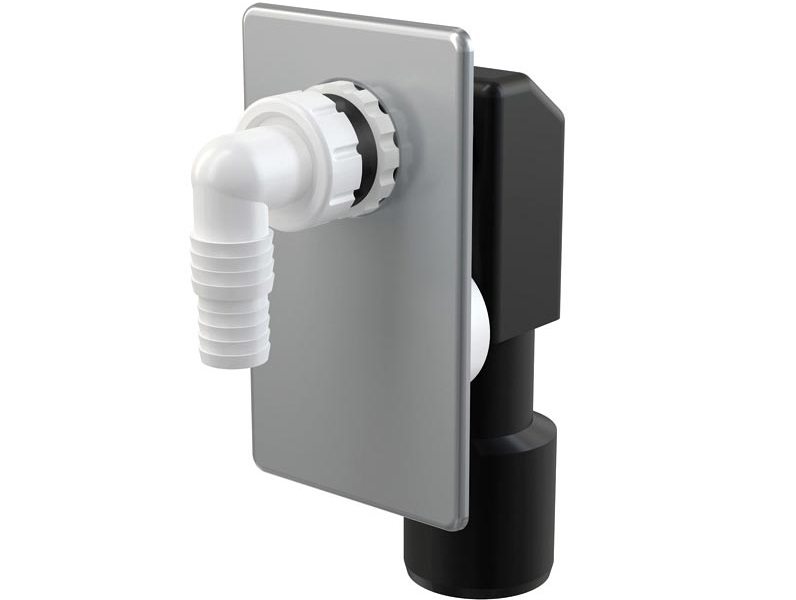
Device with check valve. Such siphons appeared relatively recently, but have already gained popularity among plumbers, who increasingly began to use them. A check valve prevents sewage water from flowing into the washing machine and rising up to the sink drain if the pipe is clogged.
For people living on the first floors of apartment buildings, such siphons have become a real salvation; if only such a valve was invented for the toilet, and in general it would be “super”!

Flat siphon.Specially designed for cases where the washing machine is placed exactly under the sink and the distance between the lid of the washing machine and the bottom of the sink is minimal. Recently, such plumbing elements have become very widely used due to their compactness and ease of installation.

What are they for and how do they work?
Everyone knows that a siphon is necessary to organize the drainage of waste water from a sink, washing machine, dishwasher and other equipment into the sewer; this, undoubtedly, is the main purpose of this plumbing element. However, we should not forget that this is not the only task that he successfully performs.
- A properly installed siphon creates a good barrier to unpleasant odors that could potentially penetrate from the sewer pipe into the room.
- This plumbing part is designed in such a way that a fairly large amount of various debris settles in it, which may well clog the sewer pipe. You can remove debris from the siphon with a “light movement of your hand” by unscrewing the storage tank, but you won’t be able to clean the pipe with a swoop.
- The siphon outlet is attached to its body at an angle, which allows you to connect the washing machine drain hose only with a bend. This bend, in turn, facilitates the operation of the pump and prevents the “siphon effect”.
One of our craftsmen joked, calling the siphon a “sewage router”; perhaps there is some truth in this joke.
Installation features
Installing a sink over a washing machine with an overflow has a lot of features. If you want to study this process in detail, read the article about installing a washing machine under the sink. In this paragraph, we will only touch on the issue of installing a siphon, although in our opinion, there is nothing complicated in this process, everything is intuitive.
A sink with an overflow can be held by a sink or countertop hanging on special mounts mounted into the wall. To select and install a siphon, it is important for us to know only the expected location of the washing machine relative to the sink.
- The washing machine is located exactly under the sink. Choose a flat siphon or one built into the wall. Screw the flat siphon to the sink drain. We insert a corrugated hose into one outlet, the other end of which we have already tucked into the sewer pipe. We insert the drain hose of the washing machine into the second outlet and secure it with a clamp - the installation is complete.
- The washing machine is located to the left or right of the sink under the countertop. Theoretically, you can use any siphon that has an outlet for a washing machine, but you need to take into account that the space under the sink will be open and the siphon itself will also be visible “in all its glory,” so there is a reason to choose a model built into the wall.
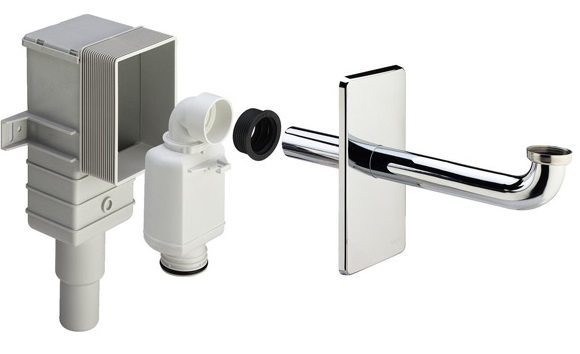
- The washing machine sits under a long countertop at a respectful distance from the sink. In this case, any siphon will also do, as long as it does not spoil the aesthetics of the room, but there is one peculiarity: since the washing machine is located quite far from the sink, the length of its standard drain hose may not be enough to connect it to the siphon. You will have to buy an extended hose and install it instead of the standard one.
In conclusion, we note that to install a siphon for a sink over a washing machine with a drain, you don’t need much, and almost no tools are needed, but choosing the right siphon can often be difficult.We hope that based on the above information, you will make the right choice, good luck!
Interesting:
Reader comments
- Share your opinion - leave a comment
Categories
Washing machine repair


For buyers

For users

Dishwasher


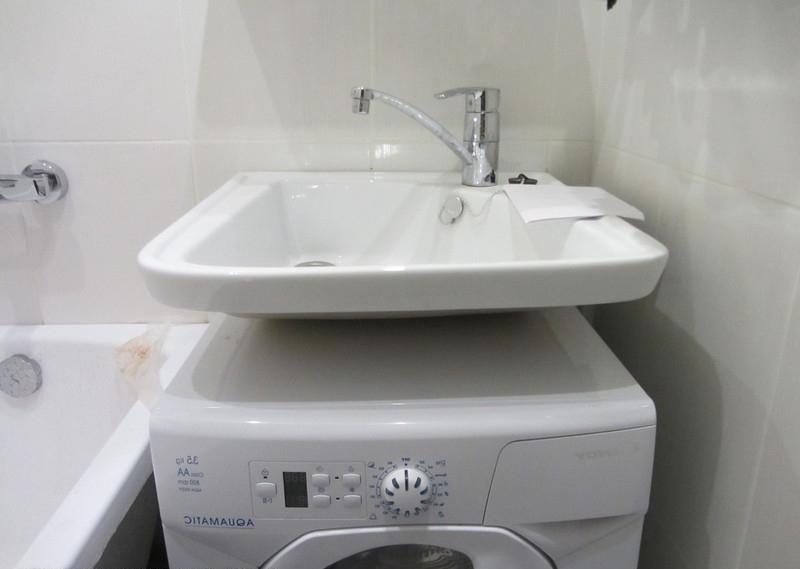

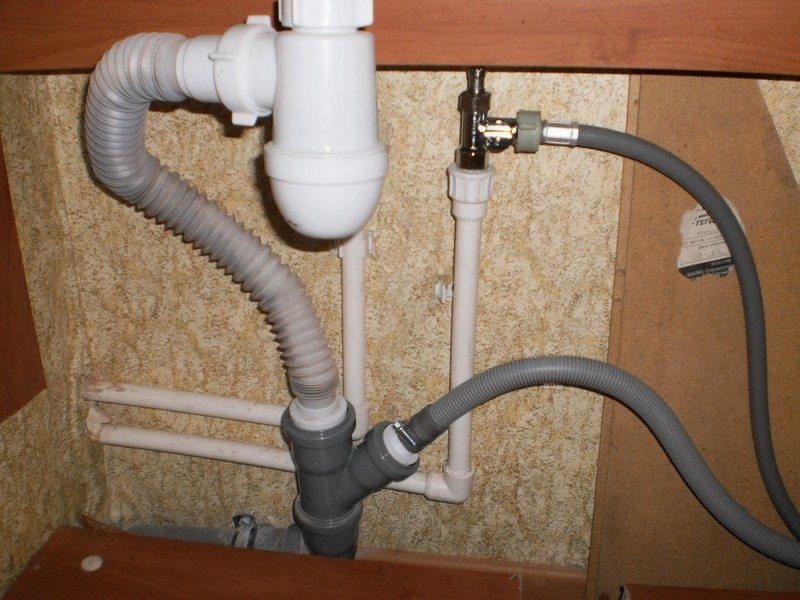
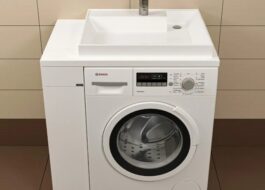
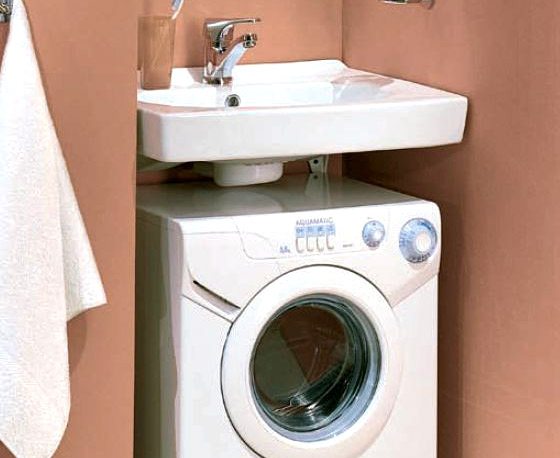










Add a comment